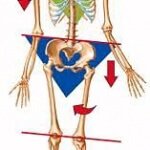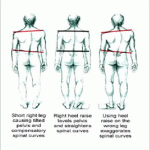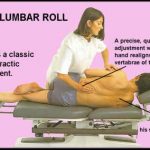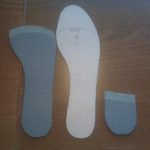
The effects of a leg length difference can be global
Let’s face it; most of us are not symmetrical. In fact it is more common to not be symmetrical than it is to be symmetrical. What matters the most is how asymmetrical you are.
How do I tell the Difference?
In the case of our leg length it is COMMON to have one leg longer (or shorter depending on which side you reference) or even one foot ½ size to a full size larger. Because it is so COMMON many doctors and therapists have adopted the idea that it is “NORMAL” to have one leg longer than the other. Unfortunately COMMON and “NORMAL” is not the same thing. You know what else is “NORMAL” in our culture? Being sedentary, out of shape and developing disease such as Diabetes and Heart Disease. Just because these things are “NORMAL” does not make them something you should be alright with having. People who have one leg longer than the other are not “NORMAL” and leg length difference should be considered in any instance of non-traumatic foot, knee, hip or lower back pain.
Having one leg longer than another might be a primary cause of unexplained foot, knee, hip or lower back pain. There are 4 variables that one must consider when attempting to decide if their leg length difference is causing or contributing to their pain.
- Are you sedentary? If you primarily watch television at home and sit at a desk at work then having one leg longer than another probably does not matter in your case.
- How active are you? If you are a walker, hiker or runner your leg length difference may very well be contributing to your painful condition.
- How large is your leg length difference? The larger the difference the more likely it is contributing to your issue.
- How old are you? The older you are the longer your leg length difference has had to cause asymmetrical wear and tear on your body.
So how do I tell if I Have One Leg longer than the other?

Most people can spot a short leg if they know what to look for
It is actually quite easy to determine leg length difference. A simple examination can be performed where the doctor or therapist measure your leg difference by measuring both of your thigh bones and both of your shin bones. Although this test is not the “Gold Standard” if performed correctly it can be reliable. The gold standard test is considered to be a CT scan that measures the exact length of your thigh bones (femurs) and shin bones (Tibias) and then the measurements are compared. In my experience many patients knew they had one leg longer than the other because their pant legs fit differently. Another simple observation that would indicate you had a leg length difference would be if you knew one foot was larger than the other. Think about it, if you have one foot longer than the other it stands to reason you might have one leg longer too.
My Chiropractor always says my Hips are “Out” and I have a Long Leg but after she/he Cracks me it is Better….but it always comes back. Why?
 It is because you can’t correct an anatomical leg length inequality by cracking (adjusting) one’s back or hips. If the bones are different lengths then the adjustment is temporarily rotating the pelvis or giving the appearance that your legs are balanced. Unless an anatomical leg length is addressed and corrected then it will always come back.
It is because you can’t correct an anatomical leg length inequality by cracking (adjusting) one’s back or hips. If the bones are different lengths then the adjustment is temporarily rotating the pelvis or giving the appearance that your legs are balanced. Unless an anatomical leg length is addressed and corrected then it will always come back.
My Physical Therapist said that I have a Functional Short Leg and that I have Weak Glutes and I need to Strengthen my Core.
You may in fact have a functional short leg but unless an anatomical leg length inequality is ruled out through proper

unfortunately strengthening glutes will not correct a leg length inequality
measurements then you will never know if your physical therapist is correct. It is estimated that 75% of the population has one
leg shorter than the other, meaning, the bones are not the same length on both sides. This skeletal imbalance, will, over time, cause functional imbalances too. One such imbalance is neurologic inhibition of the Gluteal muscles normally referred to as weakness. The problem with this theory is that patients often appear to have strong Gluteal muscles and if the physical strength is tested the muscles will appear to be strong. However, under normal activities such as running the muscles may be neurologically inhibited due to the skeletal imbalance and no amount of strengthening will ever overcome the skeletal imbalance.
My Doctor said that it’s normal and that everyone has one leg shorter than the other.

Clueless is dangerous
Your doctor says lots of things…..it does not make it accurate. Unless your doctor has read the research on anatomical leg
length inequality than they are simply repeating the same nonsense they were taught 20 years ago in medical school. Most doctors are taught that unless your leg length difference is over two centimeters that it is irrelevant. This flies in the face of common sense and is not supported by research. I think we would all agree that it is better to be symmetrical than not and that the more asymmetrical our moving parts are (our legs) the worse off we will be mechanically speaking. Did your doctor even perform an exam to objectively tell if you have a short leg? The below video details how a proper exam is performed.
How do you fix my short leg?

You want a full length lift not a heel lift…wearing a heel lift is like wearing a high heeled shoe on one side
We address the leg length difference by making a custom shoe insert (not a custom orthotic but a full length lift) that you place beneath the existing insole in your shoe. This lift is intended to lift the shorter side making it more symmetrical to the longer side. We also address the functional leg length adaption’s that have taken place over the years like muscle tightening and muscle compensation. This is done by teaching you specific strengthening and stretching exercises as well as self Myofascial release using a foam roller or massage stick. In case where the leg length difference is too large to address through a full length lift the shoe on the shorter side can be modified by adding rubber material to the outsole.
